
![]()
~ FORDWICH ~
KENT
Fordwich lost it's status as a Town in 1880, and acquired this status again in 1972

Drawing from "Canterbury", E.W. Haslehust
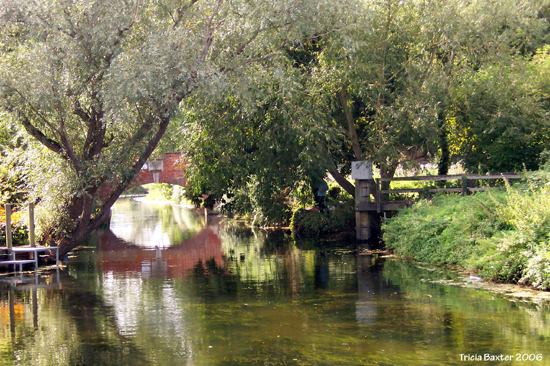
"This place is famous for excellent trouts in its river Stour." 1797
"At Fordwich, "the freemen concieve" that the freehold "of a very small extent of ground," "worth very little," and used for the purpose of drying fishingnets, belongs to the Corporation. The matter is still in dispute, and the Commissioners "could not obtain an satisfactory evidence as to the right of the property." 1835
"It is a curious reflection that, in those days of primitive transport, these walls and towers were brought stone by stone from the quarries at Caen in Normandy. The barges crossed the Channel and were unloaded at Fordwych, about two miles from Canterbury. Formerly the tides came up the river in considerable volume, and Fordwych was a flourishing port with its Mayor and Corporation; and still has its queer little town hall, its ducking stool for scolds, and its prison, though only a tiny hamlet of one hundred and fifty people. When Louis VII of France made his annual grant of 1600 gallons of wine to Christ Church Priory, a fee was paid to the Mayor of Fordwych for the use of his crane in lifting the barrels from the boats."
From "Canterbury", E.W. Haslehust
FORDWICH TOWN HALL
Rebuilt in 1555
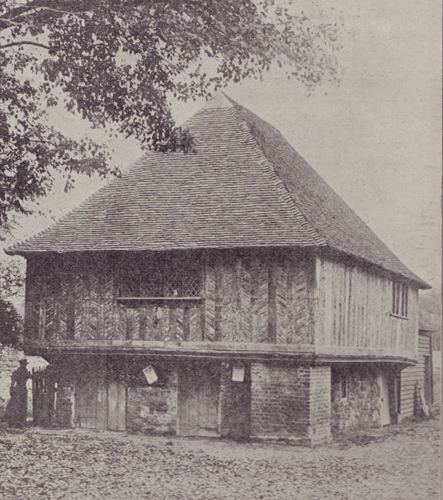
The Corporation of Fordwich consists of a Mayor, Jurats, and Freemen. The Mayor is also Coroner, and the jurates are justices. There is a Town Hall, in which the magistrates hold sessions, and administer justice.
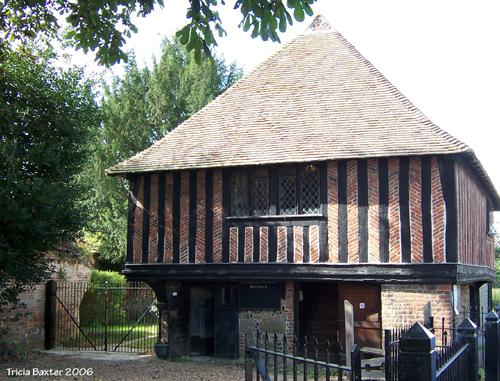
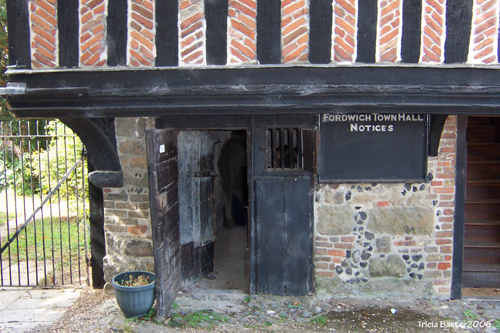
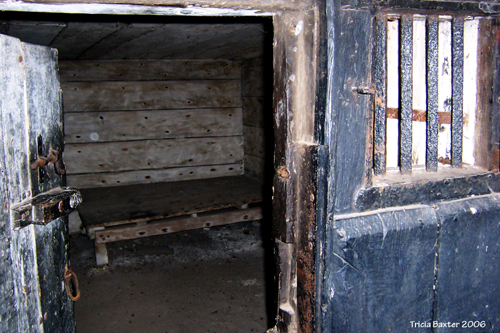
They are not wholly without the means of executing judgement, for below the Court Hall is the lock-up. There was until the last century a gallows by the quay, and there is preserved though no longer used the ancient ducking stool for termagant wives. Rambles round old Canterbury
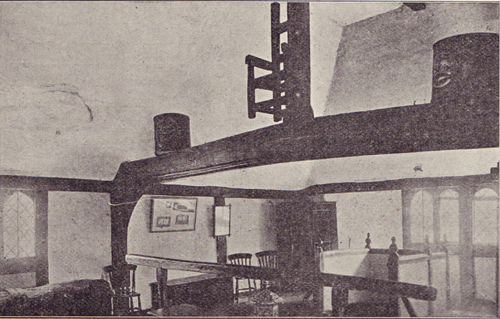
Inside the Town Hall showing the old ducking stool
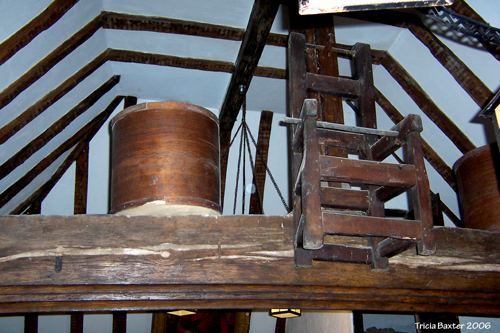
N.E. of Canterbury, called in Doomsday Book the little Borough of Fordwich, is a member of the port of Sandwich, and was anciently incorporated by the stile of the Barons of the town of Fordwich, but more lately by the name of the mayor, jurats and commonalty, who enjoy the same privileges as the cinque ports. The mayor used heretofore to be chosen on the Monday after St. Andrew's day. 1790
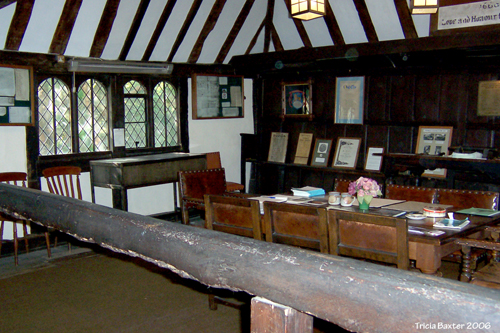
Walter Bigg, one of the jurats of Fordwich, by his Will, dated 5th December 1631, devised by his lands lying in Westbeer and Sturry, in Kent, for the relief of poor aged people of Fordwich for ever, the profits to be distributed by the mayor and jurats for the time being of the said town, one-half on Good Friday, and the other half on the Friday before Christmas, yearly, for ever; and the testator gave the letting of the lands to the mayor and jurats. The lands comprise nine acres, now let for 20l. per annum, which is distributed by the mayor and jurats half yearly, in conformity to the Will of the donor. 1834
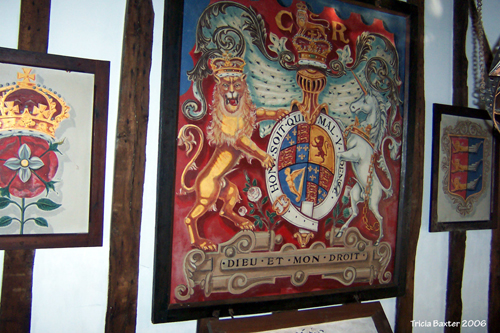
The corporation has it's insignia; the mace is a fine specimen, silver gilt and richly ornamented. It was a present from Admiral Graydon, who served with Sir George Rooke in the storming of Vigo. Both of these veterans retired to spend their last days near Canterbury.
Corporate Officers 1834
John Abbot, brewer
Friend Tomlin, esq.
Cumberland Woodruff, surgeon
Isaac Pidduck, farmer and grazier
Friend Anthony Tomlin, esq.
John Friend, esq.
Anthony Jennings, esq.
Richard Hambrook, gentleman
John Wootton, gentleman
Stephen Plummer, Town Clerk
ST. MARY THE VIRGIN CHURCH, FORDWICH
Now redundant, is open to the public
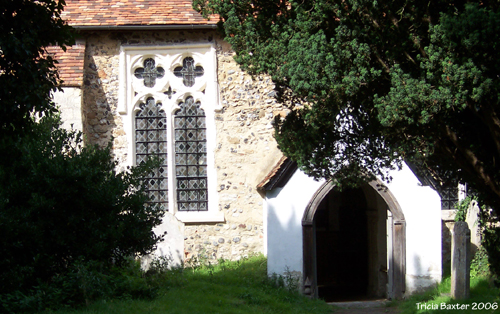
The church of St. Mary is an ancient structure, with a nave, north aisle, and chancel. Three early pointed arches divide the nave from the aisle; the chancel aisle and the tower arch are also pointed. The windows are later. There are some curious inscriptions on the ancient grave stones in the floor of the church. One dated 1605 is in memory of Aphra, wife of Henry Hawkins, "who scarcely having arrived to 21 years of age yet fully attayned perfection in many vertues" ere she "departed this frayle life." The epitaph of Catherine, wife of Valentine Northon of Fordwich, gent, also records an early death. She died in 1610, in her 21st year. The following lines are upon her tombstone:
Fame soundes so shrill over this tender coarse,
The dead growne deafe and Fame herselfe growne hoarse.
Malicious Envye cannot carpe at Fame;
For what she soundes the dead deserv'd the same.
All speake her worth that knewe her mayde or wife:
Let all speake, all too little to her life.
Fate is excus'd: it robs not her of bliss,
But us that such a lively mirrour miss.
One onely sonne she bore, at whose deare byrth
She changed here earthlye joyes to Heavenlye mirth.
There is in the church an ancient stone shrine, ark shaped, the roof carved with overlapping scallops, and one side with a series of small interlacing round arches, springing from round columns. This shrine has been for some years exposed to the weather, on the outside of the church. Hasted says it was originally inside, but was cast out into the churchyard, where it was likely to be destroyed. It was purchased by someone who removed it to the Precincts of Canterbury Cathedral. From there it was brought back, some years since, to Fordwich churchyard, and has now, quite recently, been once again taken within the church, it's proper place. Its original history is not known.

The GRAYDONS had long been resident at Fordwich, and in the old mansion there the gallant Admiral died in 1727.
"Death, Nov 5th, at Fordwich, aged 45, Mr. George Stringer, solictor, of Canterbury." The Gentlemen's Magazine 1849